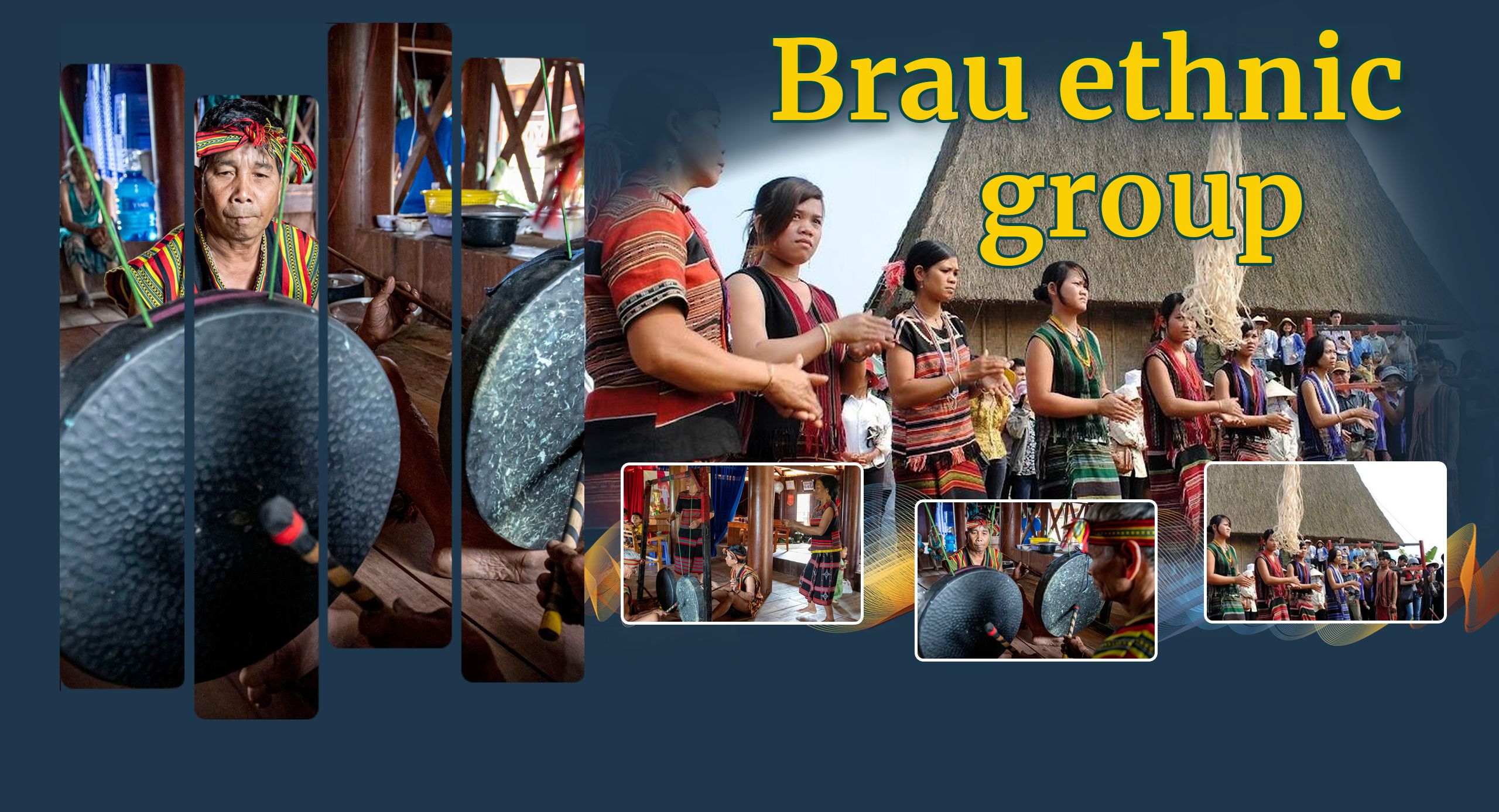
Brau is an ethnic group with less than 1,000 people in Vietnam. Thanks to the preferential and supportive policies of the Party and State, the life of the Brau people has been bettered, while traditional culture has been well preserved and further promoted.
1. Origin
The ancestors of the Brau people lived in southern Laos and north-eastern Cambodia. A majority of them now live in the Sekamarn and Nam Khoong river basins while a small part of the population migrated to Vietnam about 150 - 160 years ago and has lived in the country across between 6 and 7 generations. In Vietnam, the Brau ethnic community lives at the border junction of Vietnam, Laos and Cambodia.
Other names: Brao.
2. Population
According to the 2019 Survey of 53 ethnic minorities, there are 525 Brau ethnic people in Vietnam, including 255 men and 275 women. The average household consists of 3.6 people. 94.7% of the total population is living in rural areas
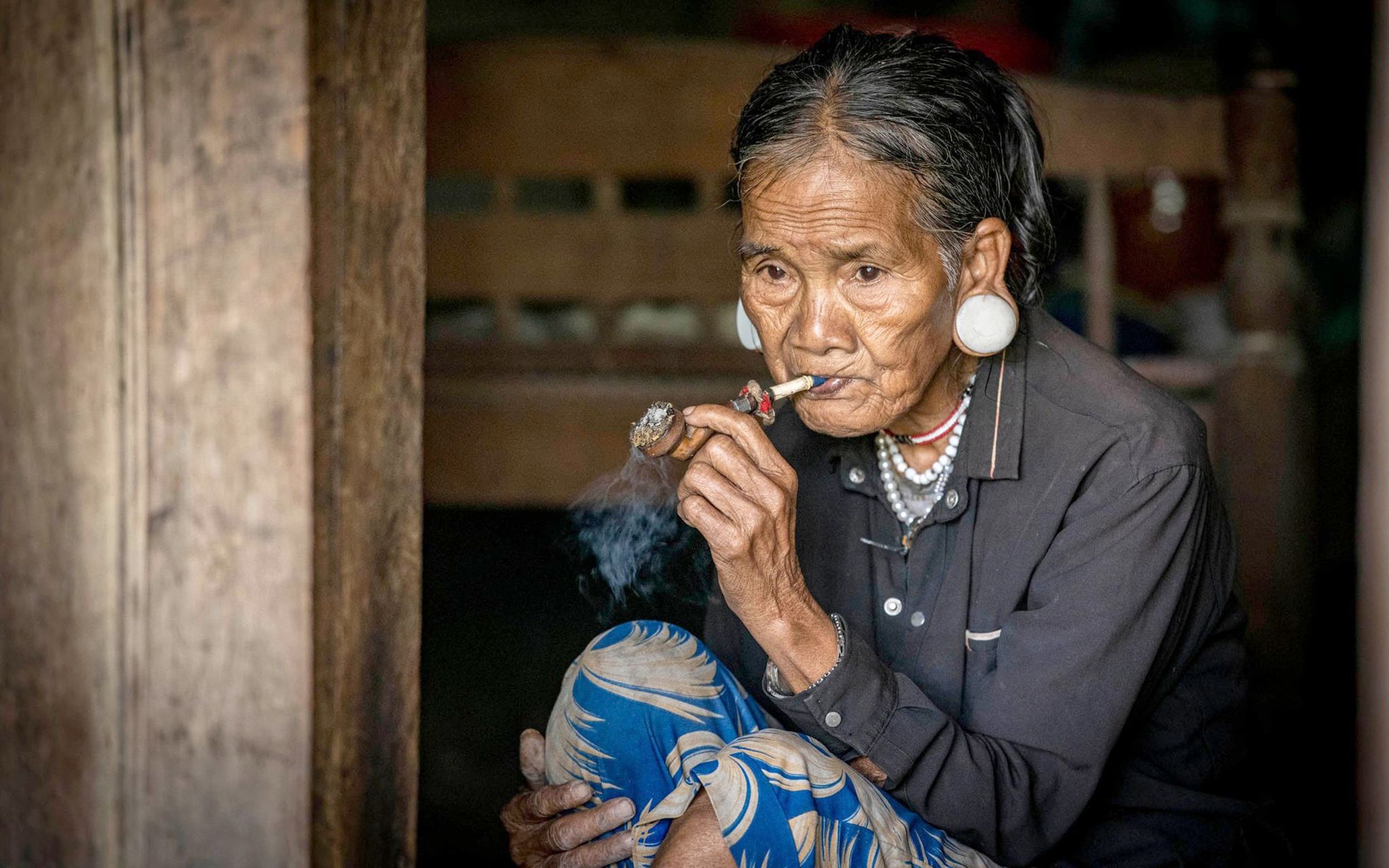
Brau ethnic elders still keep the custom of having their ears stretched and smoking with a pipe (Photo: THANH DAT)
Brau ethnic elders still keep the custom of having their ears stretched and smoking with a pipe (Photo: THANH DAT)
3. Geographical distribution
The Brau ethnic group mainly reside in Dak Me village, Bo Y commune, Ngoc Hoi district, Kon Tum province, 10km from the Bo Y international border gate and nearly 100km from Kon Tum city.
4. Language
The Brau ethnic language belongs to the Mon-Khmer language group, which is part of the Southern Asian language family. The Brau have no written language. Since national reunification, the Party and State have paid due attention to education and preservation of the traditions of the Brau ethnic group. Children can learn the common language while adults can receive vocational training.The Brau ethnic language belongs to the Mon-Khmer language group, which is part of the Southern Asian language family.
The Brau have no written language. Since national reunification, the Party and State have paid due attention to education and preservation of the traditions of the Brau ethnic group. Children can learn the common language while adults can receive vocational training.
Education: According to the 2019 Survey on 53 ethnic minority groups, the rate of Brau ethnic people aged 15 years and over who can read and write is 62.4% while the net attendance rate for children of primary school age is 104.1%, of junior secondary school age 42.9%, and of senior secondary school age 33.3%. The percentage of out-of-school children is 35.4%.
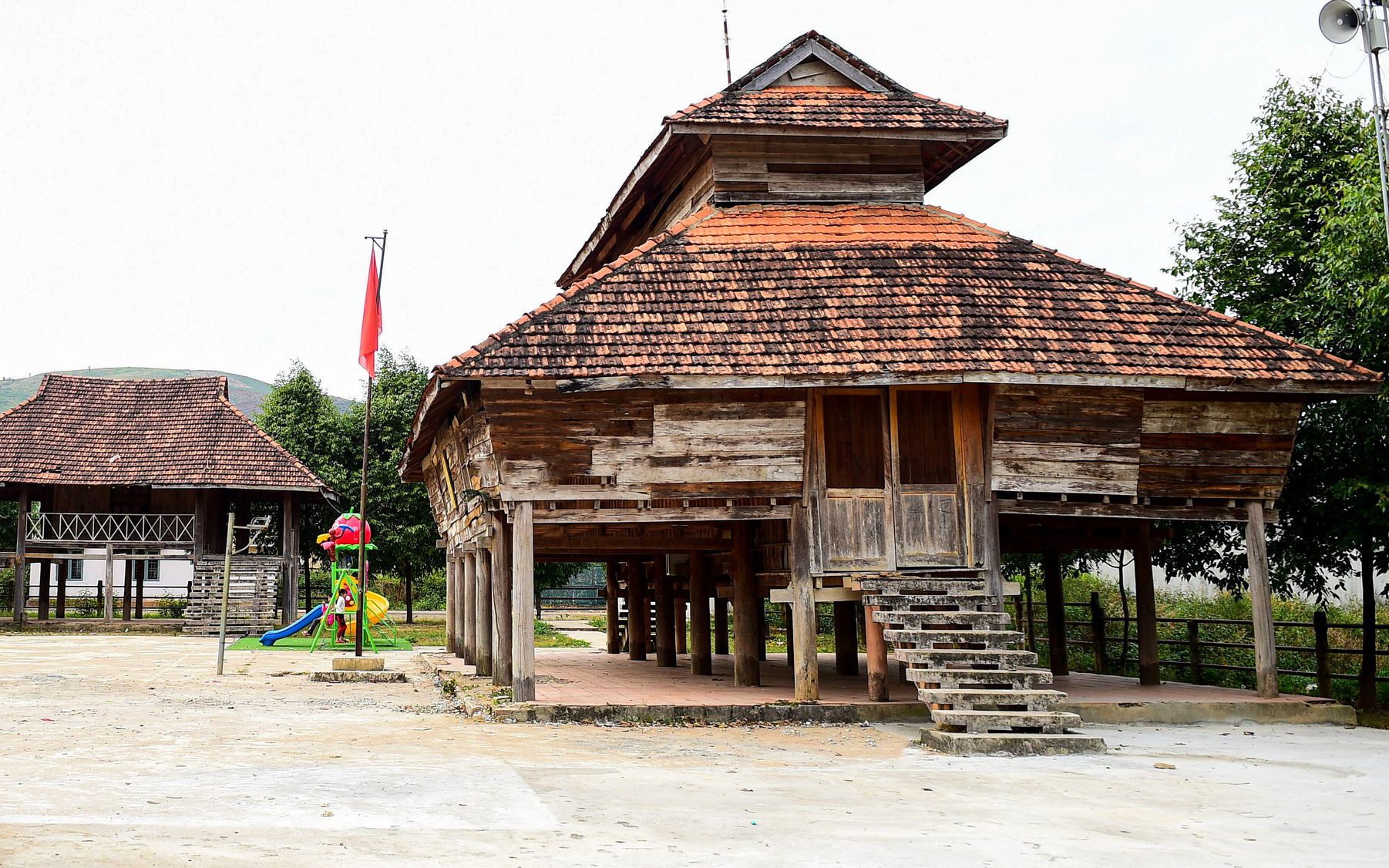
A communal house of the Brau ethnic people. (Photo: Ethnic Minority Newspaper)
A communal house of the Brau ethnic people. (Photo: Ethnic Minority Newspaper)
5. Main features
Diet: The Brau mainly eat sticky rice cooked in a bamboo tube or in an earthenware pot. Corn and cassava are only used to raise livestock and poultry. Their beverages include wine drunk from jars. Brau ethnic people, no matter at which age group or sex, like smoking tobacco.
Clothing: In the past, Brau ethnic men wore loincloths while women wore skirts. Women have the custom of stretching their ears to wear gold earrings or ivory piercings. At the age of 15-16, young Brau people have their four upper front teeth grinded and their ears stretched, marking their official access to the adult community.
Housing: Brau people live in houses on stilts with gable roofs. The house’s floor is arranged across two levels in order to divide the spaces’ functions. The village is built as a circular campus with the houses being arranged like the spokes of a wheel.
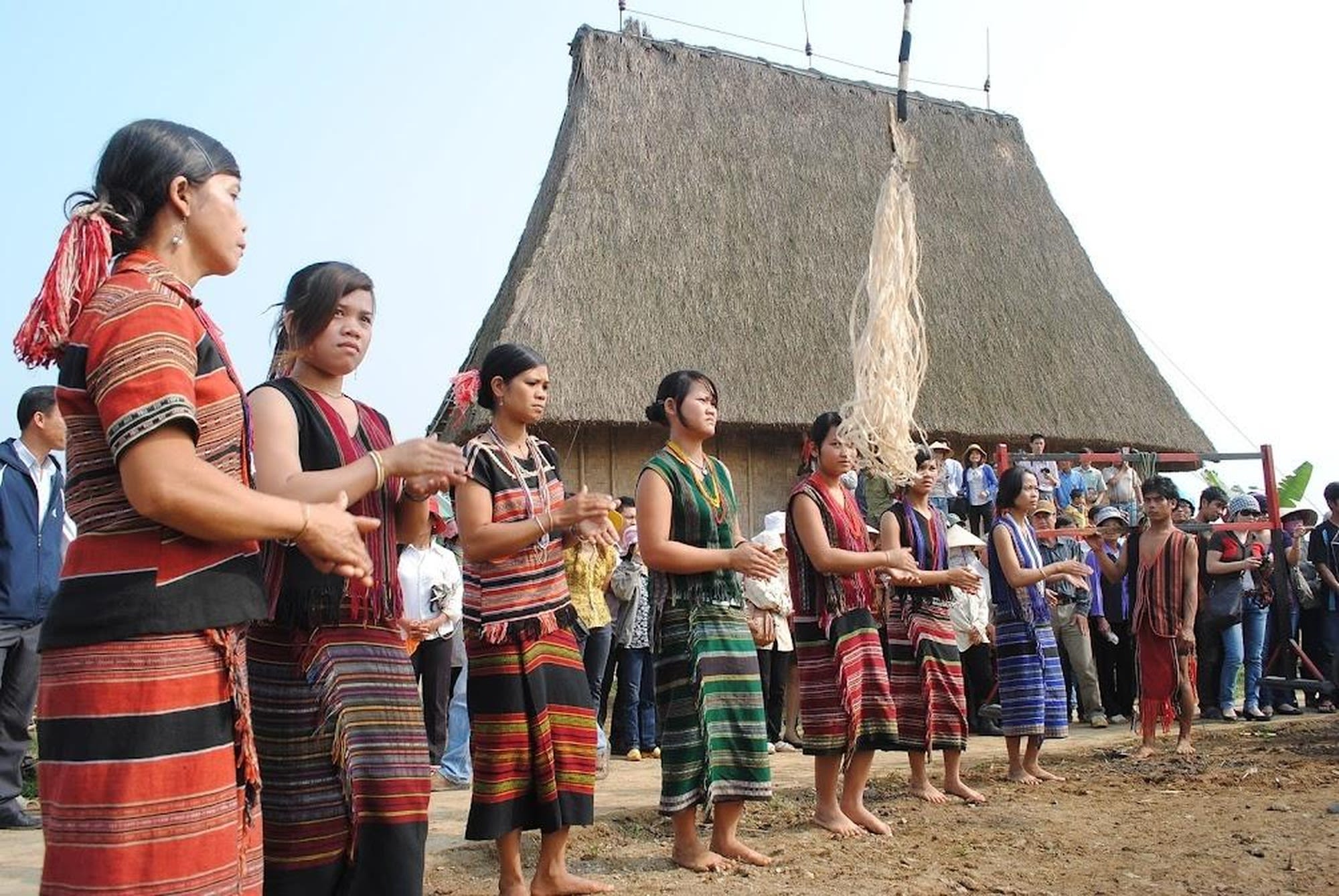
Brau people conduct a ritual to celebrate a new house. (Photo: Ethnic Minority Newspaper)
Brau people conduct a ritual to celebrate a new house. (Photo: Ethnic Minority Newspaper)
Social relations: Brau society is divided up between the rich and poor. Small patriarchal families are established, men and women are equal. However, the remnants of the matrilineal society still exist quite boldly.
Wedding: The wedding ceremony is held at the bride's house, but the groom’s family covers the expense. After the marriage, the couple live with the wife’s family for about 4-5 years. Then they live rotatedly between the families of the bride and the groom.
Funeral: When someone passes away, the family will beat gongs and drums to announce the funeral. The body is wrapped in a coffin made from tree trunk and is laid in a newly-built funeral home near the house. Notably, the coffin is buried with only half of its body underground. A funerary structure is built to house the grave and to store the assets of the deceased. All of the property is partially destroyed - broken, punctured or chipped.
New house: When the house is inaugurated, the owners will hold a solemn ceremony and invite the whole village to join the party, organised following a ritual to worship the gods.
Festivals: Brau people celebrate a festival to welcome the new rice season after harvest day. There is no fixed date for holding the festival, it depends on the season and the family.
Calendar: The agricultural calendar, calculated according to the moon, regulates the time for the rice cultivation season
Traditional culture: Brau people have folk songs with lyrics, the tale on Pa Xay – the Creator, the legend of Un cha, wedding songs, and lullabies. Their typical instrument is the ‘klong put’ lute. Brau people are famous for sets of gongs with 3 musical scales, namely ‘coong’, ‘mam’ and ‘tha’.
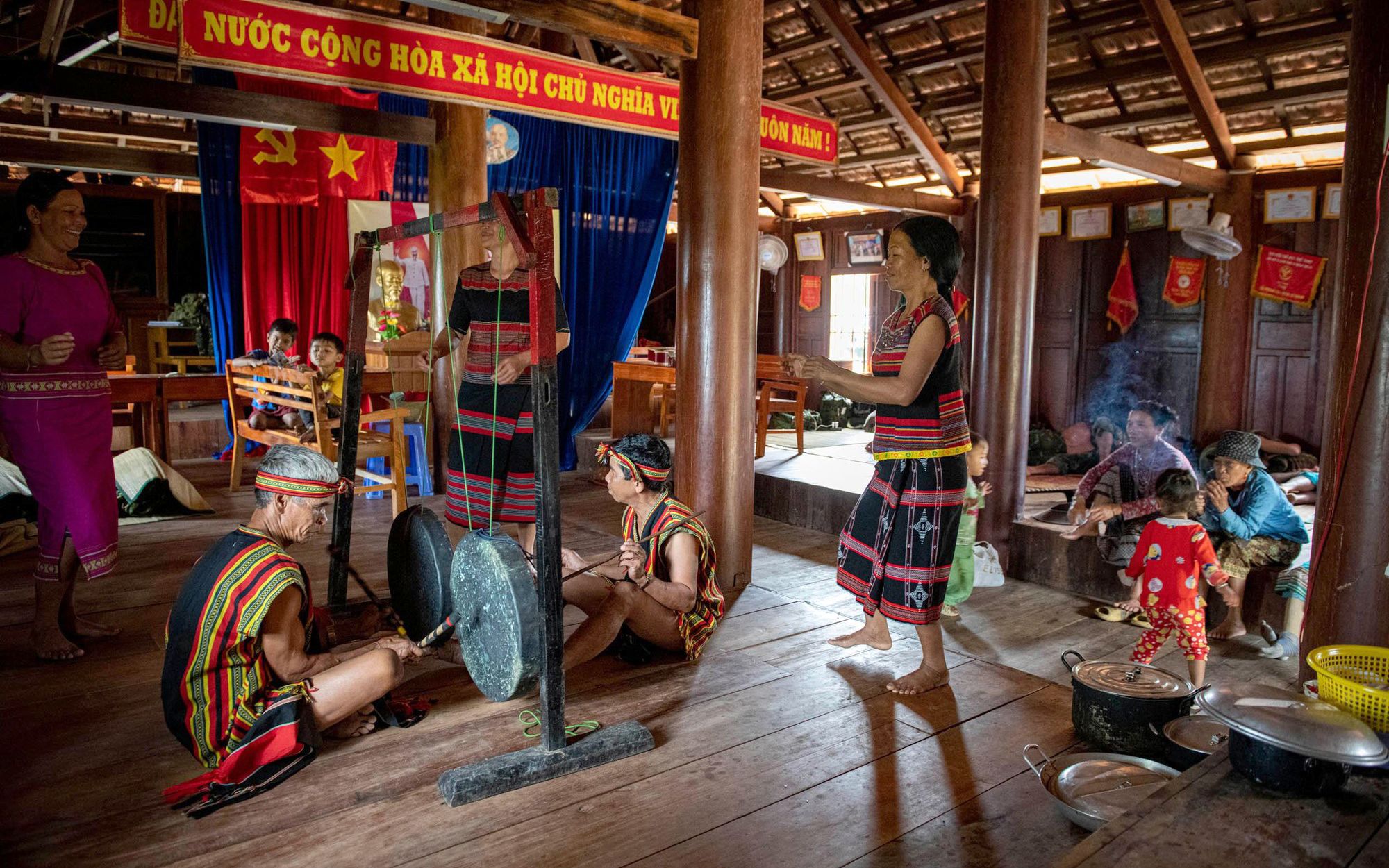
Traditional cultural activities of Brau people (Photo: THANH DAT)
Traditional cultural activities of Brau people (Photo: THANH DAT)
6. Economic conditions
The main source of income of the Brau ethnic group comes from cultivating rice, sticky rice, corn, and cassava. The farming method is slash and burn, sowing in seed holes, and harvesting by hand. Regarding handicrafts, many Brau men know knitting. Currently, the Brau ethnic community have benefited from the Party and State's policy of sedentary cultivation, especially from the programme on developing the Bo Y border gate.
According to the 2019 survey of 53 ethnic minorities, the poverty rate in Brau ethnic community is 6.1%; the rate of near-poor households is 7.9%; the percentage of people that have access to clean water is 88%; the proportion of electrified households is 100%, the unemployment rate is 0.38%, the percentage of trained workers with certificates is 2.2%; the percentage of the labour force involved in non-agricultural activities is 1.5%; the percentage of the labour force at management level or high- and middle-level technical jobs is 0.8%.